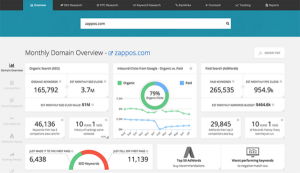Running a small business means that you often need access to additional capital. You may use it to invest in the business, pay invoices, manage inventory, or even upgrade software systems.
Unfortunately, strict banking regulations often make it difficult for companies to use small business loans. Sometimes it can seem that the only viable lending options are expensive or from questionable sources.
Luckily, there are options that don’t involve predatory lenders and can help businesses access the funding they need. Here are some innovative options for small companies to get capital without dealing with excess constraints or expensive solutions.

- Photo by Bench Accounting on Unsplash.
Online lending and the rise of alternative financing
There are two significant advantages to using an online lender: more options and greater convenience. By using an online lender, a small business may be able to find programs that aren’t commonly available at a local brick-and-mortar institution.
Traditional lenders cater to large companies, so their underwriters determine risk levels from a big business perspective. This often results in loan denials for smaller businesses or companies that have just started operating.
Online lenders often have less rigid approval processes. These alternative lenders cater to businesses that don’t have years of documented financials or large cash reserves.
Alternative business lending has always been available, but in the past, this avenue was lined with shady deals and steep interest rates. Today’s alternative lenders include several trustworthy options that use the power of fintech and innovations like artificial intelligence to provide sleek online platforms and faster processes.
The loan programs available through online alternative lenders vary widely. There are programs for those with good credit and those with credit struggles. People with less-than-perfect credit will likely have to pay a higher interest rate, but this can vary based on other factors, such as cash flow and projected sales.
Alternative lenders also may be more accessible, with quicker decisions powered by the latest in automated underwriting platforms. Often, these loans are based more on cash flow and less on collateral.
Crowdfunding as a funding option
What if, instead of a loan, your business was able to attract investors? In the past, finding investors involved networking, meeting with “angel investors,” or asking friends and family for help.
Crowdfunding has become an effective way to raise capital. There are many crowdfunding platforms, such as Kickstarter, Indiegogo, and GoFundMe.
Startups lean toward crowdfunding because those looking to provide funding tend to be swayed by the promise of a new venture. New companies have found success using crowdfunding to produce prototypes. However, established businesses have had success with crowdfunding as well, for expansions, new product launches, and other programs.
Unlike a loan, crowdfunding has multiple repayment options. A Kickstarter campaign, for example, may cast the crowdfunding as a presale, with early buyers reserving a new product. Crowdfunding sites have participation guidelines rather than qualifications. These guidelines ensure that the funding isn’t mistaken for investment and protect backers from getting involved in illegal projects.
Ultimately, whether or not someone backs your crowdfunding effort depends on the story your business tells.
Invoice factoring: When you have the business, but payment is slow
Some companies have a steady flow of orders but might have cash flow issues due to how their customers pay. These businesses may be able to leverage their outstanding invoices and history of billings into more readily available cash.
Invoice factoring companies buy unpaid invoices from businesses in exchange for cash. These lenders look at past performance and outstanding bills, providing an advance against anticipated payments. This arrangement is an effective solution for companies that need a short-term boost to make up for a difference between income and outstanding invoices.
Rather than basing approval on credit history, invoice factoring is narrowly focused on the history of customer payments. The more regular and predictable the payments, the more likely a business is to get approved.
Invoice factoring works well for B2B companies since these organizations are likely to have outstanding invoices. While invoice factoring can be a good fit for short-term injections of capital, the fees can be high, and companies have to understand the agreements before entering into a factoring loan.
Not too long ago, small businesses had limited options for raising capital. Today’s connected world allows companies to tap into a vast network of lending, crowdfunding, and invoice factoring to raise needed cash without the rigors and restrictions of traditional bank lending.
Business & Finance Articles on Business 2 Community
(22)
Report Post







